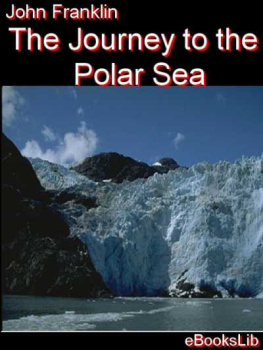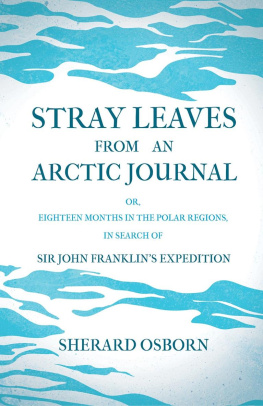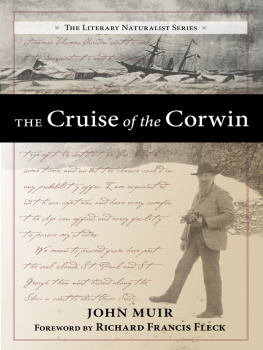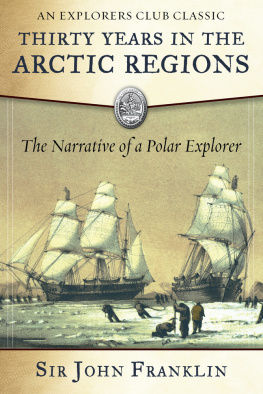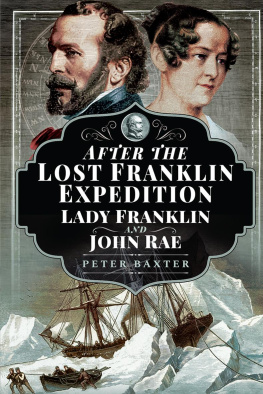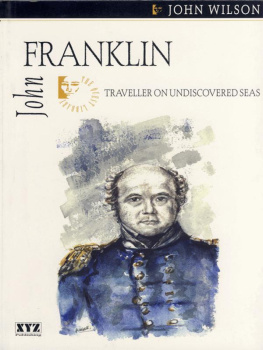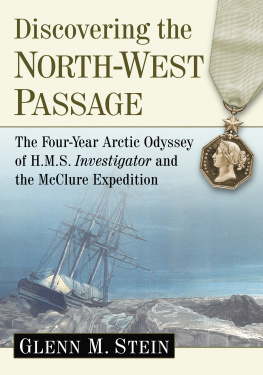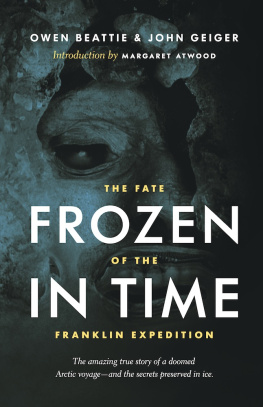SIR JOHN FRANKLIN
By John Knox Laughton
Arctic explorer, the twelfth and youngest son of Willingham Franklin of Spilsby in Lincolnshire, was born on 16 April 1786. It had been intended to bring him up for the church, but a holiday visit to the seashore excited a strong desire to go to sea, which his father vainly endeavoured to overcome by sending him for a voyage in a merchant vessel as far as Lisbon. On his return he entered the royal navy on board the Polyphemus, then just sailing for the Baltic, where she played a leading part in the battle of Copenhagen. Two months later Franklin was appointed as a midshipman to the Investigator, under the command of his cousin, Matthew Flinders , and on the point of sailing for Australia. While in the Investigator Franklin distinguished himself by his remarkable aptitude for nautical and astronomical observations; he was employed at Sydney as assistant in a little observatory which Flinders established, and won the notice of Captain King, the governor, who used to address him familiarly as Mr. Tycho Brahe. When the ship's company was broken up after the wreck of the Porpoise, Franklin accompanied Lieutenant Fowler to China in the Rolla, and, taking a passage home in the East India Company's ship Earl Camden, was with Commodore Dance in his extraordinary engagement with Linois (15 Feb. 1804), on which occasion Fowler commanded on the lower deck and Franklin took charge of the signals. On arriving in England Franklin was appointed to the Bellerophon, in which he was present in the battle of Trafalgar, again having charge of the signals, and being one of the few on the Bellerophon's poop who escaped unhurt. Two years later he joined the Bedford, and, continuing in her after his promotion to lieutenant's rank (11 Feb. 1808), was employed on the home station till the peace in 1814, when the ship was ordered to North America, to form part of the expedition against New Orleans. In a boat attack on some gunboats in Lac Borgne Franklin was slightly wounded; and he had besides a full share in the laborious duties of the campaign. Its failure may account for the fact that no attention was paid to the strong recommendation of Sir John Lambert, in command of the troops with which he had been serving, and that he remained a lieutenant, serving on board the Forth frigate, with Sir William Bolton, Nelson's nephew. With Franklin's appointment in January 1818 to command the hired brig Trent, fitting out to accompany Captain Buchan in the Dorothea, Franklin's career as an Arctic explorer commenced. Their instructions were to pass between Spitzbergen and Greenland, use their best endeavours to reach the pole, and thence, if possible, to shape a course direct for Behring's Straits. The two ships sailed on 25 April, sighted Spitzbergen on 26 May, and passed without difficulty along its western coast; they were then stopped by the ice, and, being driven into the pack on 30 July, the Dorothea received so much damage as to be in momentary danger of foundering. They got into Dane's Gat, where such repairs as were possible were executed, but it was still very doubtful whether she could live through the passage home, and further contact with the ice was clearly out of the question. Buchan's instructions fully authorised him in this contingency to move into the Trent and send the Dorothea home; but he was unwilling to appear to desert his shipmates in a time of great danger. The Dorothea's state was such as to forbid her being sent home unattended, and Franklin's request that he might be allowed to go on rendered the task of superseding him the more disagreeable. So Buchan judged rightly that his proper course was to take the Dorothea home, with the Trent in close attendance on her. They arrived in Englan d on 22 Oct.
Early in the following year Franklin was appointed to the command of an exploring expedition to be sent out with the general idea of amending the very defective geography of the northern part of America, and with more particular instructions to determine the latitudes and longitudes of the northern coast of North America, and the trendings of that coast from the mouth of the Coppermine River to the eastern extremity of that continent. The details of the route from York Factory, named as a starting-point, were left to Franklin's judgment, guided by the advice he should receive from the agents of the Hudson's Bay Company, who would be instructed to co-operate with the expedition, and to provide it with guides, hunters, clothing, and ammunition. The small party, including Dr. (afterwards Sir John) Richardson, Hood and Back, midshipmen, the last of whom had been with Franklin in the Trent, two seamen, and four Orkney boatmen, landed at York on 30 Aug. 1819, and started on 9 Sept. The scheme was, with portable boats or canoes, to follow the line of rivers and lakes, beginning with the Nelson and Saskatchewan, and ending with the Elk, Slave, and Coppermine. At Cumberland House, a long-established station on the Saskatchewan, it was found that further progress that season was impossible. One of the seamen and the Orkneymen were sent back, and, leaving Hood and Richardson to bring on the boats when the way should be open, Franklin and Back started on foot for Fort Chipewyan on the shore of Lake Athabasca, which they reached on 26 March 1820. It was Franklin's intention to make all arrangements for an onward march as soon as the boats should arrive. He now found that owing to the rivalry, amounting almost to war, between the two trading companies which disputed the territory, no supplies were available; and, when the boats came on, the expedition left Fort Chipewyan on 18 July with little more than one day's provisions and with a scanty supply of powder. On 2 Aug. they left Fort Providence on the northern shore of Great Slave Lake, the party consisting, what with Canadian voyageurs and interpreters, of twenty-eight men, besides three women and three children. The next day they were joined by a large party of Indian hunters, under a chief Akaitcho. The progress was very slow, and the winter came on earlier than usual. By 25 Aug. the pools were beginning to freeze, and, though Franklin was anxious at all hazards to push on to the sea and establish himself for the winter at the mouth of the Coppermine, he yielded to the very urgent remonstrances of Akaitcho, and wintered in a hut which is still shown on the map as Fort Enterprise. It was not till 14 June 1821 that the ice gave way sufficiently for them to launch their canoes on the Coppermine, and to bid farewell to Akaitcho and his Indians. By 14 July they came within sight of the sea, and on the 21st embarked for their voyage in the Arctic Ocean. And so to the eastward in a tedious navigation along the coast, naming Cape Barrow and Cape Flinders, as far as Cape Turnagain, which they reached on 18 Aug.; when Franklin, finding that his resources would admit neither of going on nor of going back to the Coppermine, determined to take his way by a river to which he gave the name of his young companion, Hood. Hood's river was soon found to be impracticable for navigation. They took the large canoes to pieces, built two small ones which they could carry with them, reduced their baggage as much as possible, and began their march for Fort Providence through the country which has the distinction of being labelled, even in the Arctic, as Barren Grounds. The story of their sufferings is one of the most terrible on human record. Cold, hunger, and fatigue broke down even the strongest of the party. Some died, some were murderedpoor Hood among the number, one was put to death as the murderer. In their last extremity Franklin and Richardson fell in with Akaitcho, who fed them, took care of them, and brought them in safety to Fort Providence on 11 Dec. Back and the miserable remnant of their party joined a few days later. They rested there for some months, and reached York again on 14 June 1822. Thus terminated, wrote Franklin, our long, fatiguing, and disastrous travels in North America, having journeyed by water and land (including our navigation of the Polar Sea) 5 ,550 miles.





